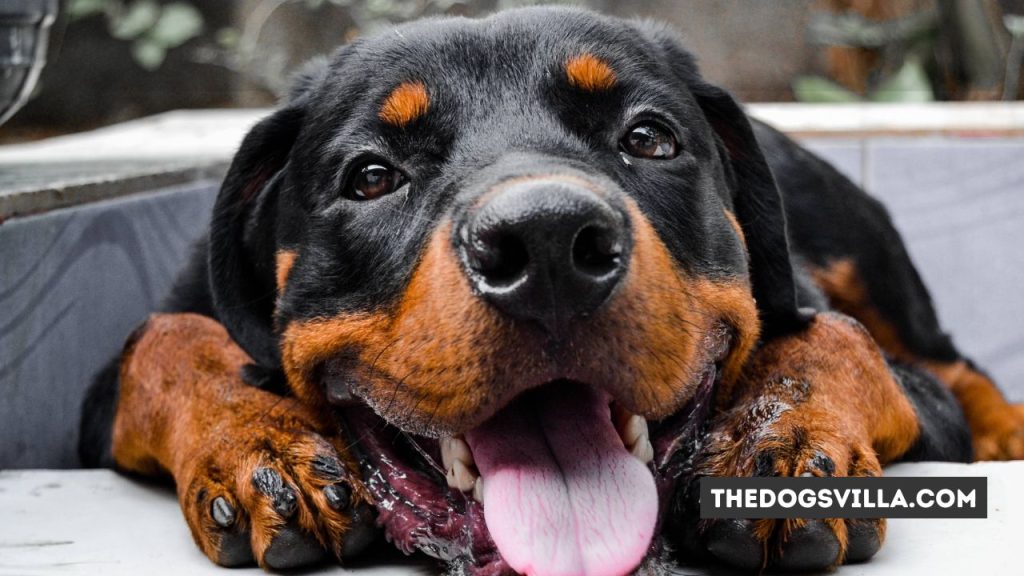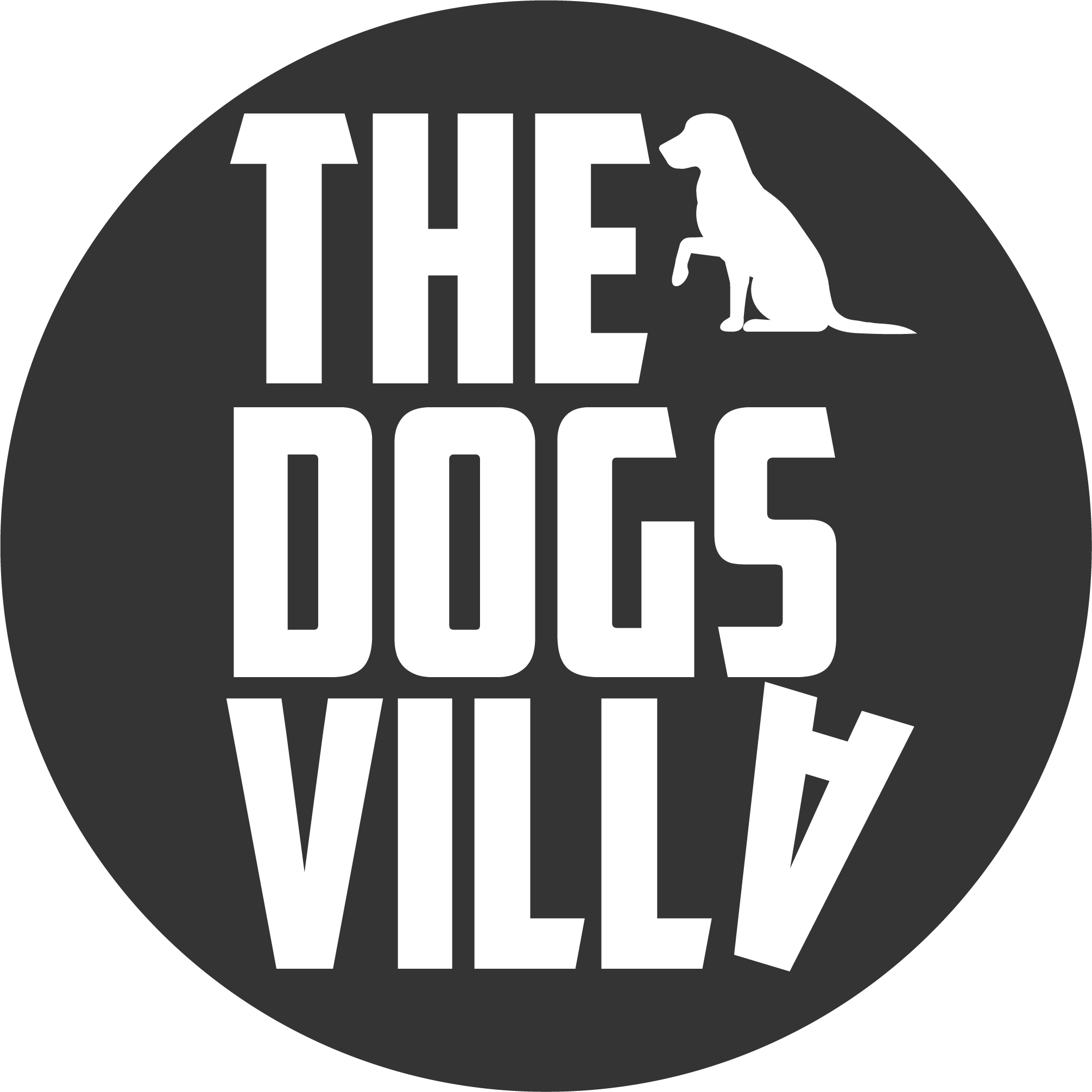Rottweilers are powerful canines that snarl to express happiness or fear. Critical context comes from their grumble and body language. Well-socialized Rottweilers play silly rather than fight with trusted friends. Rottweilers’ growls can indicate excitement or danger depending on their trigger and body language. Rottweilers are calm and eager to engage when their muscles wiggle, and frightening rumbles cause protective attitudes. Understanding Rottweiler growling situations lessens their cruel reputation.
Contents
- 1 Do Rottweilers Growl When Happy?
- 1.1 Relaxed Facial Expressions and Body Posture
- 1.2 Play Bows
- 1.3 Tail Wagging
- 1.4 Loose Jowls and Smiling
- 1.5 Licking or Nuzzling
- 1.6 What Does a Rottweiler’s Growl Sound Like?
- 1.7 Do Rottweilers Growl When Greeting Their Owners?
- 1.8 Will My Rottweiler Growl While Playing?
- 1.9 Do Rottweilers Growl When Pet or Handled?
- 1.10 Will My Rottweiler Growl Over Food or Toys?
- 1.11 What Triggers Fear-Based Growling in Rottweilers?
- 2 7 Reasons Why Rottweilers Growl Out of Happiness
- 2.1 1. Greeting Their Favourite Person
- 2.2 2. Receiving Affection and Praise
- 2.3 3. Reuniting With Canine Playmates
- 2.4 4. Receiving High-Value Treats or Meals
- 2.5 5. Settling Into Comfy Spots for Naps
- 2.6 6. Playing With Canine or Human Companions
- 2.7 7. Investigating New Sights and Smells During Outings
- 2.8 Understanding Your Rottweiler’s Special Language
- 3 Rottweiler Growling: Frequently Asked Questions
- 4 Conclusion
Do Rottweilers Growl When Happy?
A happy Rottweiler often displays classic signs of contentment through body language. Some ways that happy Rottweilers typically behave include:
Relaxed Facial Expressions and Body Posture
Happy Rottweilers generally have a relaxed facial expression with no tension around the eyes, forehead or mouth. Their body is loose and wiggly, without stiff or tense muscles. Their weight may shift from side to side as their body sways when interacting with a person or animal that brings them joy.
Play Bows
Invitation to play or interact is a common sign of a happy, well-socialized Rottweiler. They may dip their front end downward while keeping their back end up in a playful “bow” stance, with a relaxed wagging tail. This shows they are comfortable and wanting positive engagement with their surroundings.
Tail Wagging
Fast tail wagging that causes movement through the hips and hindquarters is a giveaway of a Rottweiler in high spirits. They may circle or bow playfully while maintaining exuberant tail motions. This shows their enjoyment and satisfaction with current interactions or stimuli.
Loose Jowls and Smiling
When Rottweilers are very happy and relaxed, the loose skin around their mouth may appear like a human smile. Their lips loosen as their mouth remains closed or slightly open in a grinning expression. This is a sign they are completely at ease and content without the need or urge to grab or hold objects in their mouth.
Licking or Nuzzling
Affectionate behaviors like licking a human’s hand or another animal companion or nuzzling their toys or bedding are natural displays from happy Rottweilers. These behaviors release pleasurable hormones associated with close social bonds and positive associations with their person, other pets or favorite items.
Table 1: Common Signs of a Happy Rottweiler
| Behavior | Description |
|---|---|
| Relaxed facial expression | No tension around eyes, forehead or mouth |
| Play bows | Dipping front end down while keeping back end up in “bow” stance |
| Wagging tail | Fast wagging that moves hips and hindquarters |
| Loose jowls, smiling | Loose skin around mouth like a human grin |
| Licking/nuzzling | Licking people or pets, nuzzling toys or bedding |
What Does a Rottweiler’s Growl Sound Like?
A Rottweiler’s growl can vary from low rumbles to loud, gutteral warnings. Growls originate from deep within their throat and chest. The sound is an intense, prolonged rumbling instead of a quick bark or yip.
Rottweilers may combine growling vocalizations with defensive body language to clearly signal boundaries to avoid unwanted approaches. Defensive signals include:
- Raised hackles along their back
- Ears perked forward
- Intense stare
- Curled lip exposing front teeth
- Stiff, low stance with head thrust forward
Understanding the context around Rottweiler growling gives insight into their motivation and meaning.
Do Rottweilers Growl When Greeting Their Owners?
Rottweilers bond closely with their owners and aim to please. Growling when greeting an owner they know well is very uncommon. However, some Rottweilers may grumble softly in pleasure at their owner’s return, especially if the owner has been away.
This vocalization may sound somewhat like a growl but conveys a happy message rather than a warning. Friendly “grumbles” are typically combined with loose body language – swaying, wagging or play bows. Defensive or threatening growls involve tense muscles and confrontational postures.
Will My Rottweiler Growl While Playing?
During energetic play with their trusted human or another compatible dog, Rottweilers may emit playful growls. This allows them to immerse themselves in rough, exciting games that channel their natural instincts.
Play growls have a less threatening tone than defensive growls. Rottweilers maintain loose body language while play-growling, with no signs of aggression. A play bow often precedes or follows a burst of playful growling. These cues signal the intent for positive interactions and enjoyment with no aim to harm.
Do Rottweilers Growl When Pet or Handled?
Rottweilers prefer to be touched, petted or handled gently in preferred areas at their own pace. An unfamiliar person reaching toward a Rottweiler’s head or paws can trigger light warning growls. This educates the person to respect the Rottweiler’s boundaries and move more slowly until earning their trust through non-threatening behavior.
If a Rottweiler is comfortable and enjoying affection from a trusted person, they remain relaxed. Growling during petting by a known individual is very rare and suggests discomfort or pain that puts them on edge. Removing pressure and investigating further is best in this scenario.
Will My Rottweiler Growl Over Food or Toys?
Food and toys are highly valued resources that may instigate defensive growling if approached incorrectly. Many Rottweilers display food or toy possession aggression. This occurs if they perceive competition from people or animals for items they wish to keep for themselves. Defending their valuables replaces happy, relaxed moods with rigid tension.
Rottweilers prone to resource guarding give warnings to signal items are not up for grabs. Teaching them to connect your presence with something positive (added treats) helps ease defensive reactions. Their willingness to yield objects also keeps possessions from becoming triggers.
What Triggers Fear-Based Growling in Rottweilers?
When Rottweilers feel scared or threatened, growling communicates a “back off” message. Fear-based growls serve as distance-increasing cues during stressful events like:
- Exposure to startling sights, sounds or smells
- Interacting with strangers entering their territory
- Vet examinations
- Bath time
- Loud environments or quick movements in tight spaces
Helping timid Rottweilers face their fears gradually while positively reinforced builds their copeability. Their desire to warn others away lessens as their world seems less full of “scary” threats.
7 Reasons Why Rottweilers Growl Out of Happiness

Rottweilers are confident guard dogs and faithful household pets. Rottweilers speak by growling, although not always out of aggression. These canines have many rumbles, grumbles, and vocalizations besides their threatening bark. The context and body language of a Rottweiler’s snarl reveal more than just their mood. Rottweilers communicate delight and devotion through their gruff growls in certain situations.
1. Greeting Their Favourite Person
Rottweilers form intense bonds with their primary caretaker. When away from this special person, they eagerly await their return. Upon their entrance, a Rottweiler may emit a soft “woo woo” grumble in excitement. This gruff sound conveys the happiness they feel to reunite with the top human they adore.
Accompanying body language shows the Rottweiler staying loose and wiggly, lacking tension. Their weight may shift from side to side while leaning into their person for petting and attention. A fast wagging tail that moves their entire hindquarters proves they cannot contain their sheer joy at their beloved human’s presence.
2. Receiving Affection and Praise
Rottweilers aim to please the humans they respect and trust. When receiving positive reinforcement like belly rubs, kind words or their favorite treats from these special people, Rottweilers soak up the attention.
The happiness overwhelms them to the point they may emit familial-sounding “roo roo” rumblings. It comes from deep within their chest since they want the sound to carry and be heard by their adored person. Silly body movements like play bows, nuzzling toys or human hands accompany the vocalization.
3. Reuniting With Canine Playmates
As natural guard dogs, Rottweilers prefer being the only pet. Some accept outside canine newcomers cautiously, but certain dogs do bond closely with Rottweilers enough to become trusted playmates.
When greeting dogs they recognize as friends after a period apart, Rottweilers may grumble-bark. This growly sound conveys excitement and affection upon reunion. Their body posture stays loose while initiating play by bowing down and presenting their rear end for the other dog to sniff. Face licking and gentle mouthing also showcase their happiness at their compadre’s return for fun.
4. Receiving High-Value Treats or Meals
Rottweilers’ love of food means their favorite tasty bites or mealtimes elicit sheer contentment. Some emit happy rumbles while plunging their face into a puzzle toy stuffed with food or when their owner fills their bowl. Their eyes may soften while grunting in satisfaction when receiving extra delicious goodies like bully sticks or marrow bones to gnaw.
Rottweilers’ association of these favored food items with owners who provide life’s essentials explains their growly “thank you” sounds. Tail wagging and lack of tension in their face, neck and body prove they are relaxed and grateful versus defensive of resources.
5. Settling Into Comfy Spots for Naps
Watching a Rottweiler circle to flatten their bedding just right before collapsing into the fluffy pit with a harrumphing groan is an endearing sight. Their grumbles sound gravelly to convey the pure coziness they feel burrowing into the satisfactory spot they created with their paws and teeth.
Rottweilers may emit snoozy grunts and sighs while stretching out since letting their guard down to sleep leaves them vulnerable. The sounds communicate security and comfort with their immediate environment – an important precursor before these alert dogs drift into slumber. Their body goes limp once assured all is well.
6. Playing With Canine or Human Companions
High-energy Rottweilers thrive when daily activity meets their exercise needs. This intelligent breed requires both physical AND mental stimulation to remain calm, happy pets. Thus, playtime ranks extremely important for a well-adjusted Rottweiler.
Play growling has a less serious tone compared to defensive growls. Rottweilers may emit these silly vocalizations spontaneously or when another dog play-bows to entice them to romp. Brief pauses let the playmate take turns “growling” too. They alternate bursting forward to mouth wrestle gently or chase their companion in wild, fun abandon.
Outdoors play that allows them to expend energy through enjoying their powerful musculature makes Rottweilers downright giddy. Their barks intersperse with playful growls until both pals poop out, panting in exhaustion and satisfaction.
7. Investigating New Sights and Smells During Outings
Walks provide Rottweilers with exciting sights, sounds and smells to explore using their keen senses while patrolling alongside their trusted human. Their guarding background sparks curiosity about changes in their environment not previously encountered.
Happy rumbles accompany enthusiastic tail wags when investigating intriguing stimuli like fresh mulch piles, construction projects or bushes rustling with squirrels begging to be chased during neighborhood walks. Grumbles reflect their eagerness to take in new information and experiences while out and about with their bonded bipedal companion.
Understanding Your Rottweiler’s Special Language
Paying close attention to Rottweilers’ intricate vocalizations and corresponding body language helps owners appreciate the broad range of emotions these expressive dogs aim to convey. Not all growls communicate aggression or fear – many grumbles, rumbles and groans show happiness, affection and sheer contentment.
Rottweilers feel most fulfilled when respected, well-exercised and rewarded with positive interactions that strengthen the treasured bond with their family. Meeting their needs means plenty of reasons for this devoted breed to greet each day with tail-wagging, face-licking, growly gusto!
Rottweiler Growling: Frequently Asked Questions
Do Rottweilers growl when tired or resting?
Rottweilers may emit low rumbles when nestling into bedding without any aggression behind it. Owners can determine if content grumbles match other signs of happiness like loose muscles, wiggly body motions or relaxed facial expression.
Why does my Rottweiler growl when I hug or hold them?
Constricting hugs put Rottweilers on the defense since restraint prevents escape. Light growling educates owners that close handling around their body is unpleasant and to give them space.
Is my Rottweiler being aggressive/dangerous when growling while playing?
Play-growling has a less serious tone than defensive growling. Combining vocalizations with play bows and loose muscles shows enjoyment. Brief pauses let playmates reciprocate. If it escalates in roughness, intensity or frequency, redirect to gentler play.
My Rottweiler puppy growled while I retrieved them from behind the sofa. Were they guarding their space back there?
Puppies explore intriguing spaces like behind furniture but can feel trapped when retrieved. Light growls let owners know they feel scared or defensive about being directly reached for.
If my Rottweiler growls when I mess with their paws or brush them, is this just their personality?
Rottweilers often dislike handling of sensitive body parts, especially by newcomers or children grabbing at them suddenly This triggers warning growls that educate about personal boundaries, not inherent aggression.
Conclusion
Rottweiler growling serves an important communicative function to indicate discomfort, fear or desire to protect valuables. Not all Rottweiler growls indicate aggression – some grumbles or play-growls show happiness and willingness to engage positively.
Learning to distinguish their growl context avoids mistakenly attributing warning cues as innate viciousness. Respecting Rottweilers’ preferences and introducing handling methods gradually makes them feel safer over time. Their devotion and affection remains clear when aggression triggers arediffused or avoided through proper training, socialization and building trust.
With dedicated relationship-building, Rottweilers prove themselves steadfast, good-natured protectors. Their imposing growls hold far less frequency and intensity toward their beloved companions, replaced instead with their signature loyalty.

